
How to Use Arduino UNO R4 Minima: Examples, Pinouts, and Specs
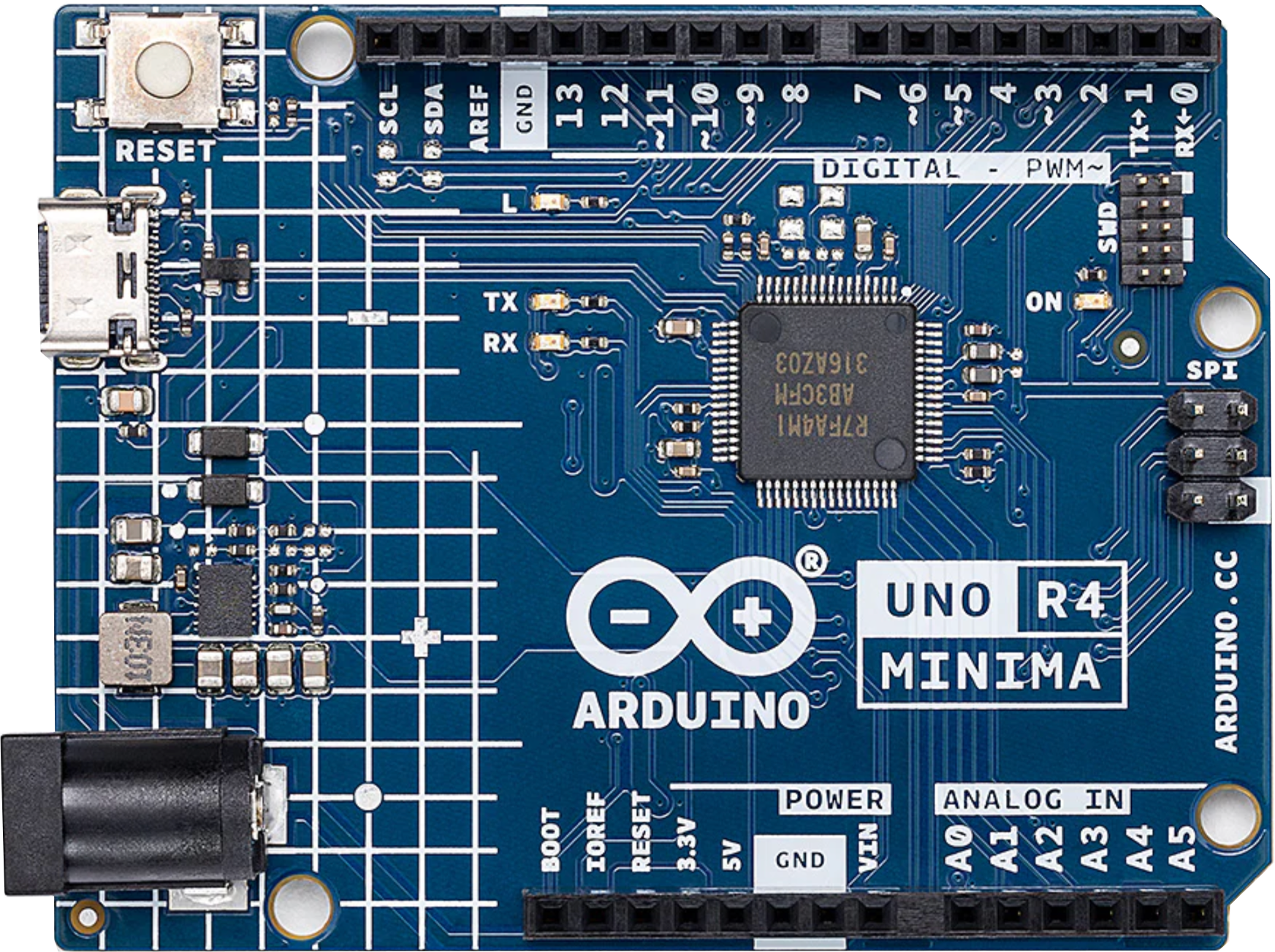
 Design with Arduino UNO R4 Minima in Cirkit Designer
Design with Arduino UNO R4 Minima in Cirkit DesignerIntroduction
The Arduino UNO R4 Minima is a compact and versatile microcontroller board developed by Arduino. It is based on the Renesas RA4M1 microcontroller, offering enhanced performance and features compared to its predecessors. Designed for easy prototyping and development, the UNO R4 Minima is ideal for a wide range of applications, including IoT, robotics, automation, and educational projects. Its compatibility with the Arduino IDE and extensive ecosystem makes it a popular choice for both beginners and experienced developers.
Explore Projects Built with Arduino UNO R4 Minima
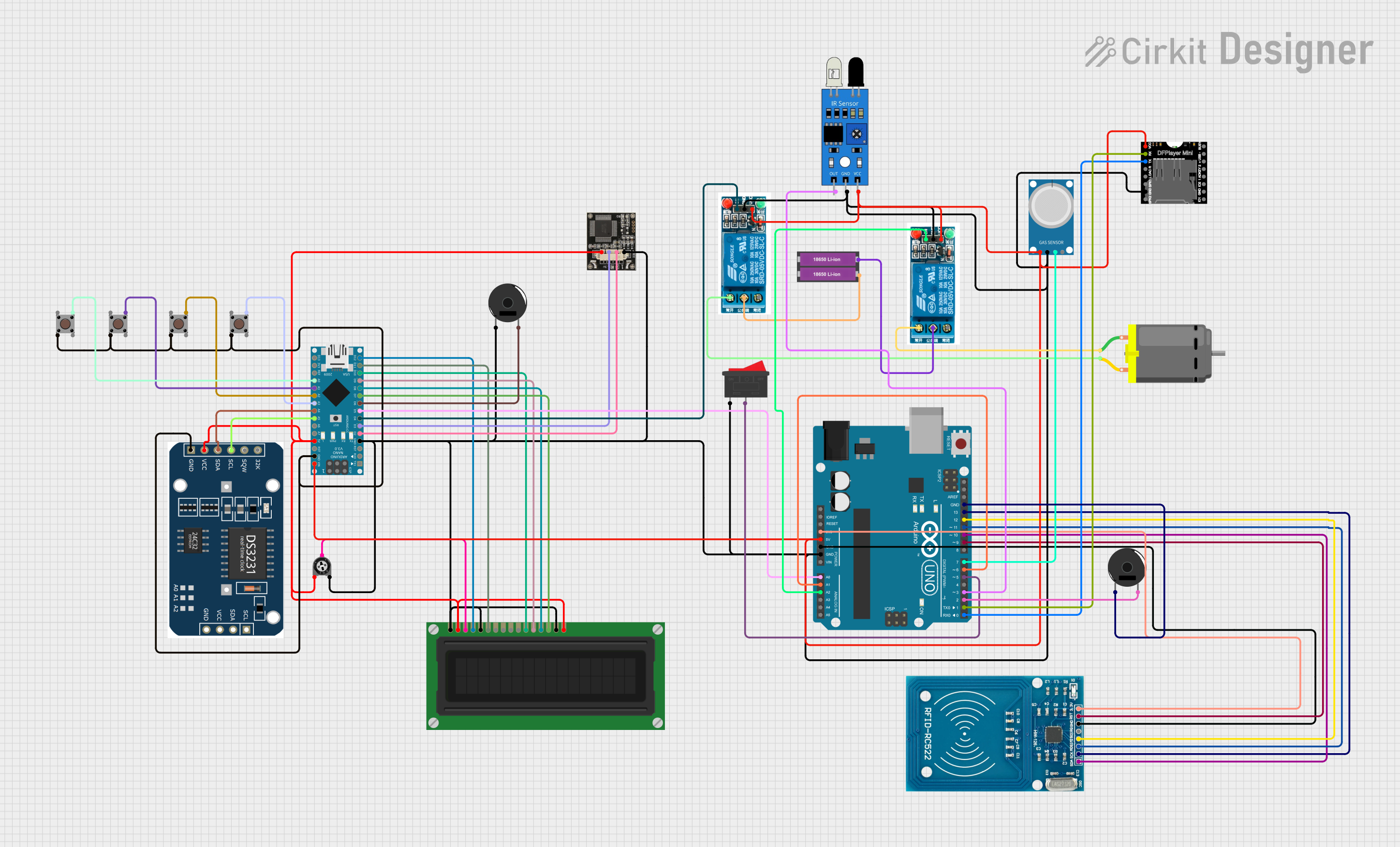
 Open Project in Cirkit Designer
Open Project in Cirkit Designer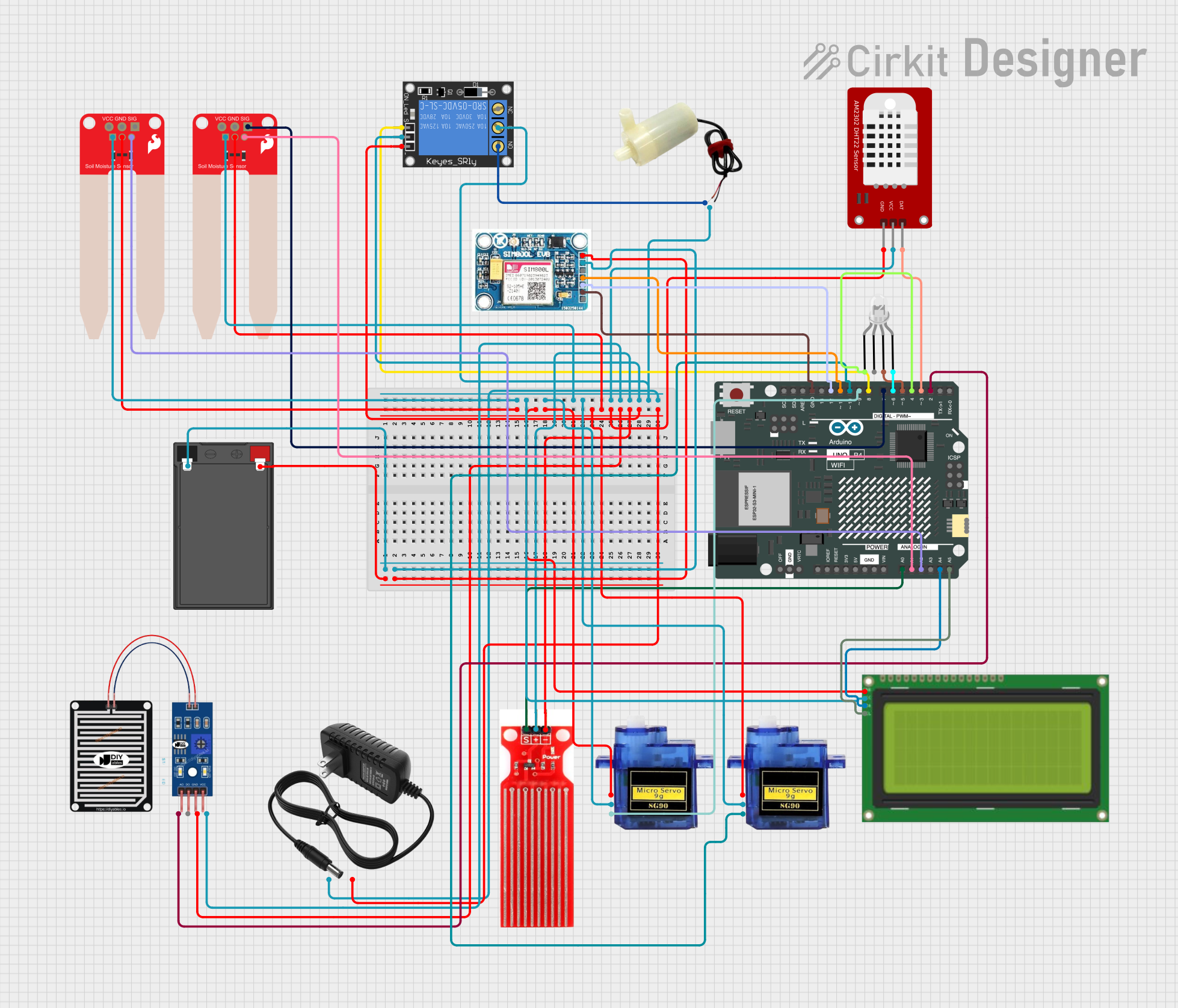
 Open Project in Cirkit Designer
Open Project in Cirkit Designer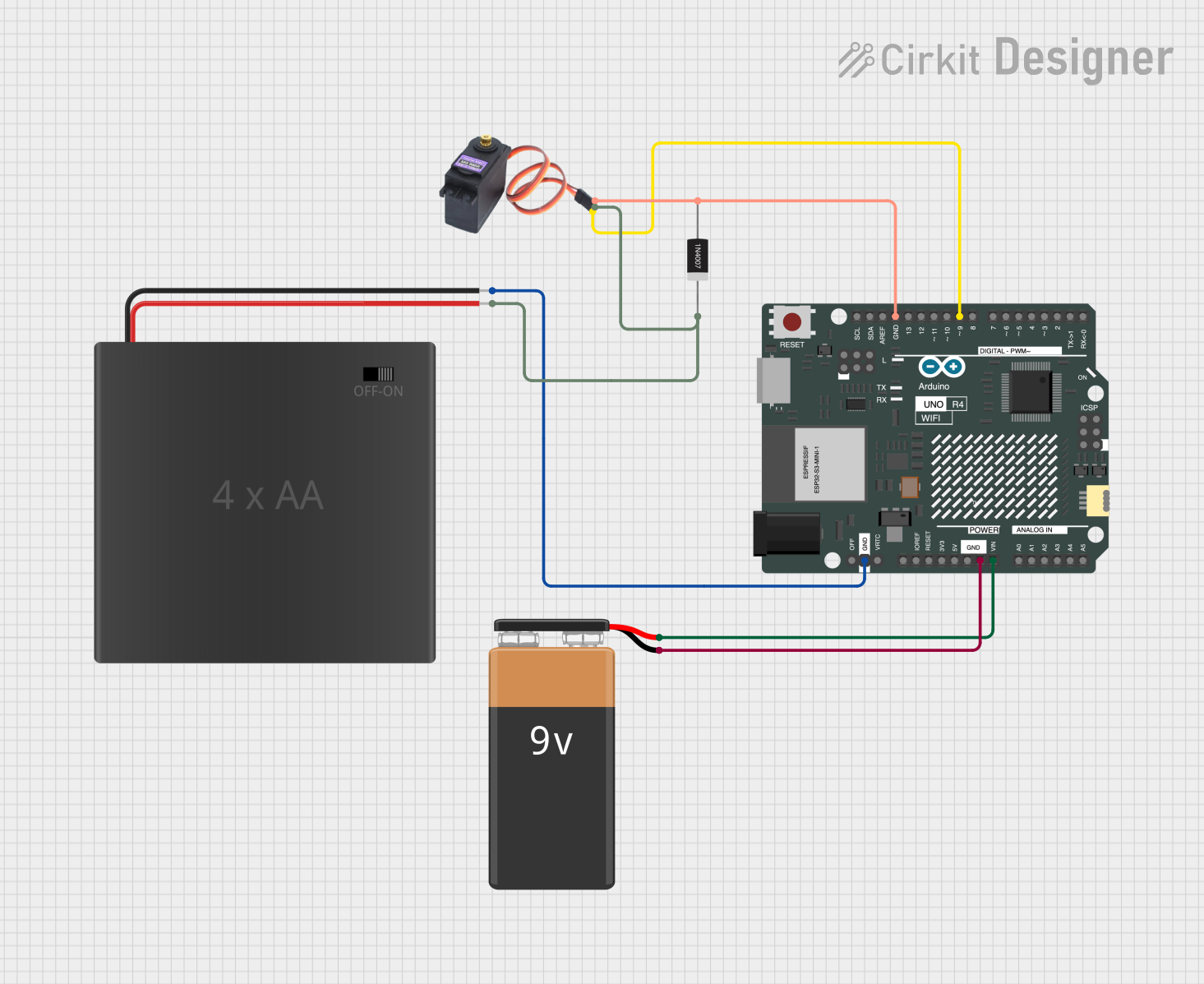
 Open Project in Cirkit Designer
Open Project in Cirkit Designer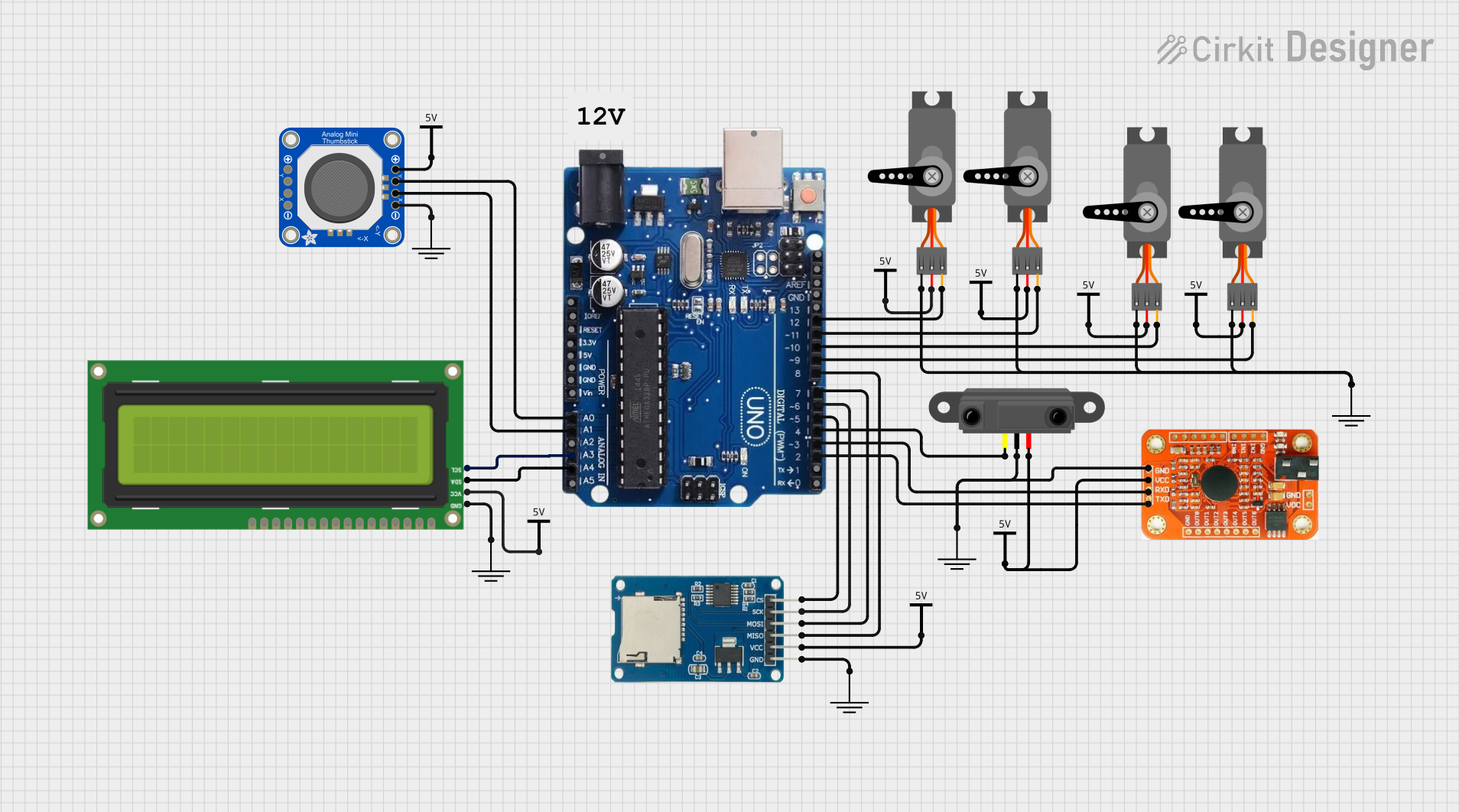
 Open Project in Cirkit Designer
Open Project in Cirkit DesignerExplore Projects Built with Arduino UNO R4 Minima

 Open Project in Cirkit Designer
Open Project in Cirkit Designer
 Open Project in Cirkit Designer
Open Project in Cirkit Designer
 Open Project in Cirkit Designer
Open Project in Cirkit Designer
 Open Project in Cirkit Designer
Open Project in Cirkit DesignerCommon Applications and Use Cases
- IoT Projects: Collecting and transmitting sensor data to the cloud.
- Robotics: Controlling motors, servos, and sensors in robotic systems.
- Automation: Building smart home devices and industrial automation systems.
- Education: Teaching programming, electronics, and embedded systems.
- Prototyping: Rapid development of proof-of-concept designs.
Technical Specifications
Key Technical Details
| Parameter | Specification |
|---|---|
| Microcontroller | Renesas RA4M1 (Arm® Cortex®-M4, 48 MHz) |
| Operating Voltage | 5V |
| Input Voltage (VIN) | 6-24V |
| Digital I/O Pins | 14 (6 PWM outputs) |
| Analog Input Pins | 6 |
| Flash Memory | 256 KB |
| SRAM | 32 KB |
| EEPROM | None (can emulate EEPROM in Flash) |
| Clock Speed | 48 MHz |
| USB Interface | USB-C (for programming and power) |
| Communication | UART, I2C, SPI |
| Dimensions | 68.6 mm x 53.4 mm |
| Weight | 25 g |
Pin Configuration and Descriptions
| Pin | Type | Description |
|---|---|---|
| VIN | Power Input | External power input (6-24V). |
| 5V | Power Output | Regulated 5V output from the onboard regulator. |
| 3.3V | Power Output | Regulated 3.3V output. |
| GND | Ground | Ground connection. |
| Digital 0-13 | Digital I/O | General-purpose digital input/output pins. |
| PWM Pins | PWM Output | Pins 3, 5, 6, 9, 10, 11 support PWM output. |
| Analog 0-5 | Analog Input | 10-bit ADC pins for reading analog signals. |
| AREF | Analog Reference | Reference voltage for analog inputs. |
| RESET | Reset | Resets the microcontroller. |
| TX (D1) | UART Transmit | Serial data transmission. |
| RX (D0) | UART Receive | Serial data reception. |
| SCL | I2C Clock | Clock line for I2C communication. |
| SDA | I2C Data | Data line for I2C communication. |
| SPI Pins | SPI Interface | MOSI, MISO, SCK for SPI communication. |
Usage Instructions
How to Use the Arduino UNO R4 Minima in a Circuit
Powering the Board:
- Connect the board to your computer using a USB-C cable for programming and power.
- Alternatively, supply external power via the VIN pin (6-24V) or the DC barrel jack.
Programming the Board:
- Install the latest version of the Arduino IDE from the Arduino website.
- Select "Arduino UNO R4 Minima" as the board in the Tools menu.
- Write your code in the Arduino IDE and upload it to the board via the USB-C connection.
Connecting Components:
- Use the digital and analog pins to connect sensors, actuators, and other peripherals.
- Ensure proper voltage levels and current requirements for connected components.
Using Communication Protocols:
- Use UART (TX/RX), I2C (SCL/SDA), or SPI (MOSI, MISO, SCK) for communication with other devices.
Important Considerations and Best Practices
- Voltage Levels: Ensure that all connected components operate at 5V or use level shifters for compatibility.
- Pin Current Limits: Do not exceed 20 mA per I/O pin to avoid damaging the microcontroller.
- Heat Management: Avoid overloading the board to prevent overheating.
- Static Protection: Handle the board with care to avoid static discharge damage.
Example Code for Arduino UNO R4 Minima
The following example demonstrates how to blink an LED connected to digital pin 13:
// Blink an LED connected to pin 13
// This example toggles the LED on and off every second.
void setup() {
pinMode(13, OUTPUT); // Set pin 13 as an output
}
void loop() {
digitalWrite(13, HIGH); // Turn the LED on
delay(1000); // Wait for 1 second
digitalWrite(13, LOW); // Turn the LED off
delay(1000); // Wait for 1 second
}
Troubleshooting and FAQs
Common Issues and Solutions
The board is not detected by the computer:
- Ensure the USB-C cable is properly connected and supports data transfer.
- Check if the correct board and port are selected in the Arduino IDE.
Code upload fails:
- Verify that no other application is using the COM port.
- Press the RESET button on the board and try uploading again.
Connected components are not working:
- Double-check wiring and ensure proper connections.
- Verify that the components are compatible with 5V logic levels.
The board overheats:
- Ensure that the current drawn by connected components does not exceed the board's limits.
- Use external power for high-power components.
FAQs
Q: Can I use the Arduino UNO R4 Minima with 3.3V sensors?
A: Yes, but you will need a level shifter to safely interface 3.3V sensors with the 5V logic of the board.Q: Does the UNO R4 Minima support Wi-Fi or Bluetooth?
A: No, the UNO R4 Minima does not have built-in wireless connectivity. For wireless features, consider the Arduino UNO R4 WiFi.Q: Can I use shields designed for older Arduino boards?
A: Yes, the UNO R4 Minima maintains the same form factor and pinout as the classic Arduino UNO, ensuring compatibility with most shields.Q: How do I emulate EEPROM on the UNO R4 Minima?
A: You can use the Flash memory to emulate EEPROM. Refer to the Arduino documentation for specific libraries and examples.
This concludes the documentation for the Arduino UNO R4 Minima. For further details, visit the official Arduino website.